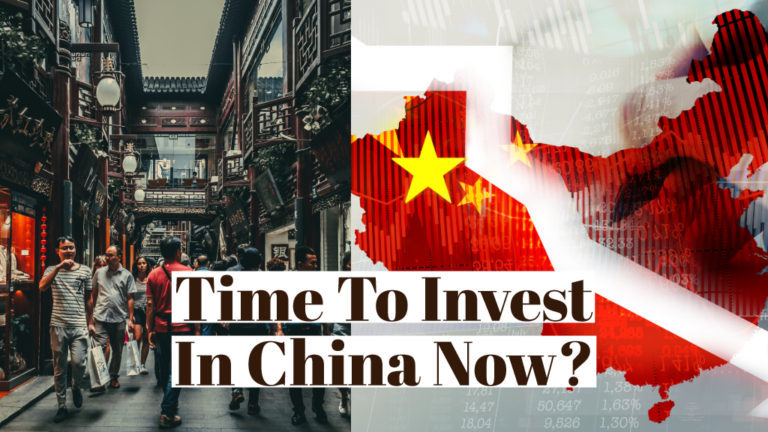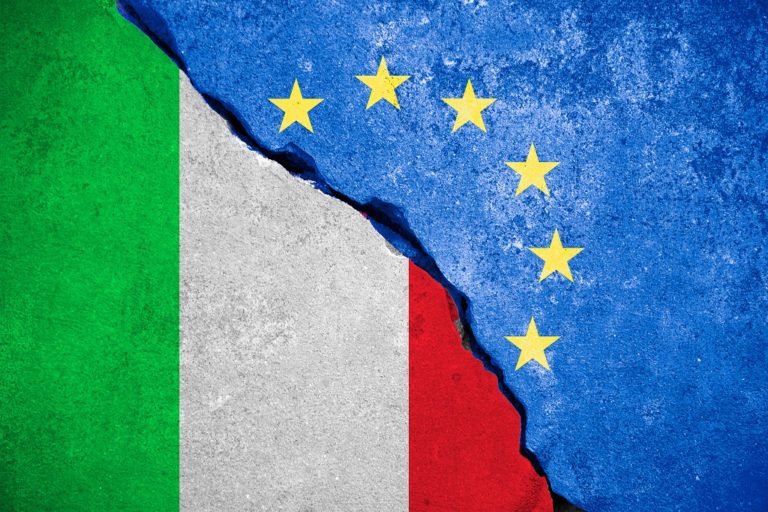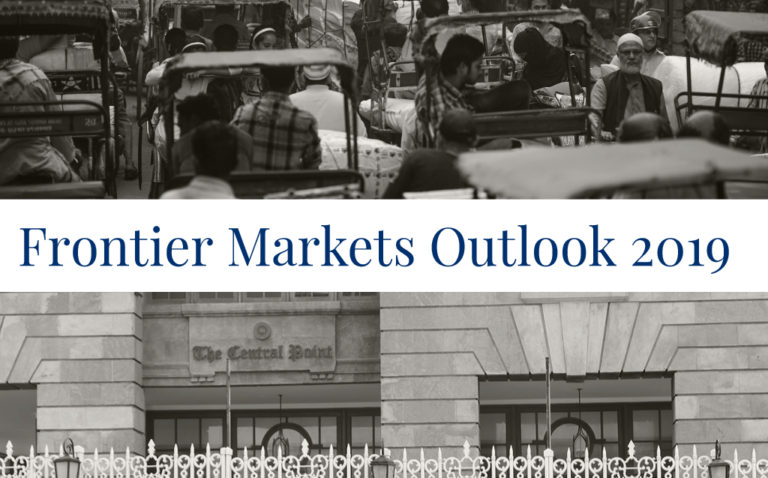Venezuela – An Investment Opportunity of A Lifetime?!
Venezuela Economic Outlook 2019
Venezuela has the world’s largest proven oil reserves. According to the Organization of the Petroleum Exporting Countries (OPEC) data in 2015, it has an estimated 300,878 millions of barrels of oil, ahead of Saudi Arabia (265 billion) and Canada (170 billion.)
However, the supposedly wealthy country is in danger of bankruptcy and utter economic collapse. International Monetary Fund foresees that Venezuela will break another record of hyperinflation this year, with a projected rate of 10 million percent in 2019.
Is the country with gigantic oil deposits and one of the founding members of OPEC, doomed? What could be the catalyst to unlock this massive value for the country and its investors? Everything depends on a positive resolution of a politically and economically embroiled country, support of its largest neighbors and hoards of creditors. But such a positive resolution could be around the corner. At long last, we have a catalyst in place for which we have been waiting for such a long time and it has a name – Juan Guaidó!
Venezuela’s Recent Developments
On January 10th this year, Venezuelan President Nicolás Maduro was sworn in to serve a new six-year term after being reelected under more than doubtful circumstances.
The election was widely condemned as illegitimate. After mass protests, opposition party leader Juan Guaidó has declared himself interim president.
As a result of these events, US President Donald Trump announced that the US no longer recognizes Maduro as the legitimate president of Venezuela, choosing instead to recognize opposition leader Juan Guaidó as the “interim president.”
Following the US lead, all major economies on the continent such as Canada, Argentina, Chile, Brazil took similar action, proofing that Maduro is highly unpopular among his fellow Latin American neighbors. Further support came from key-European countries, such as France, Germany, and Spain. Only Cuba Nicaragua and Bolivia, and a few others still seem to be supporting Maduro.
https://bigthink.com/strange-maps/which-countries-support-maduro-guaido?rebelltitem=1#rebelltitem1
Venezuela’s Economy
Venezuela’s economy has steadily deteriorated since the crash of oil prices in 2014 left it unable to sustain a socialist system of subsidies and price controls. In last July, the IMF compared the hyperinflation in Venezuela to that of Germany in 1923 and Zimbabwe in the late 2000s.
Maduro slashed five zeros off the bolivar currency and boosted the minimum wage thirty-fold in an effort to stabilize prices in August 2018. But inflation continued unabated in September, with prices rising 4 percent per day to reach an annualized rate of 488,865 percent, according to the opposition-run congress.
The IMF said the economy would contract 5 percent in 2019, with 18 percent drop in the Gross Domestic Product. However, IMF warned that its projections for Venezuela should be “interpreted with caution” because of a lack of official economic data.
Venezuela central bank El Banco Central de Venezuela (BCV) stopped publishing economic indicators nearly three years ago, and opposition legislators have become the only source of such information.
Economic data might be missing for a long time, but the results of yearlong mismanagement and corruptions are more than obvious – Hyperinflation, lack of all essential consumer goods from food to medical supplies. It’s clear that the country faces an enormous humanitarian crisis.
The economic collapse has prompted an exodus of Venezuelans. It has overwhelmed neighboring countries such as Colombia and even the US. More than 3 million Venezuelans have already abandoned their country and it is predicted the number will increase to 5 million this year. It is described as the worst immigration crisis in the history of Latin America.
Venezuela’s Oil Production and Sanctions
Venezuela’s oil production, once the principal motor of its economy, is further plummeting. At the time when Hugo Chávez won the presidency in 1998, production stood at nearly 3.4 million barrels. Today barely reaches 1 million barrels and could drop to 500,000 by the end of 2019.
A combination of mismanagement, falling Oil Price and corruption are the real reason for such a dramatic decline of Oil production and hence Venezuela’s slow path to ruin.
The low production and the continuing drop in private economic activity have been leading to the collapse of the nation’s health system. The power grid, the water supply, and other public services are already hit hard by the economic crisis.
Certainly, Maduro doesn’t blame himself or his followers, but solely the US for its economic misery. He refers to the sanctions that the US has been posing on Venezuela’s economy for more than a decade. Most recently, the US posed its hardest sanctions yet.
About half of Venezuela’s oil production per day in exports goes to the US refineries. But last January, Washington imposed export sanctions against Venezuela’s state-owned oil firm PDVSA, limiting transactions between US companies that do business with Venezuela through purchases of crude oil and sales of refined products.
The sanctions aim to freeze sale proceeds from PDVSA’s exports of roughly 500,000 barrels per day (bpd) of crude oil to the US. Trading is still allowed until April 28, but US dollars gained from those sales cannot be repatriated and must remain in frozen PDVSA bank accounts.
After April 28, if Maduro is still in office, then the US firms cannot buy Venezuelan crude.
However, an analyst at consultancy Rystad Energy Paola Rodriguez-Masiu suggests that oil export volumes of Venezuela will not be eliminated from the market, but rather rerouted to other countries such as China and India.
Paired with Saudi’s pledge to lower its oil production further, the sanction is potentially boosting crude oil’s price. On a brighter note, PDVSA major oil deal with France’s Maurel & Prom was announced in early-January. The French company will invest $400 million for a 40% stake in the Petroregional del Lago joint venture.
Venezuela’s Debt and Political Implications
Venezuela has not had official financial relations with either the IMF or the World Bank after it paid off its debt five years ahead of schedule under President Hugo Chávez.
Yet, as of today, Venezuela is probably the sovereign state with the most complicated debt structure in the world. According to the Financial Times, analysts estimate Venezuela has some $140bn debt outstanding, with more than $65bn owed to bondholders and another roughly $40bn due to China and Russia.
Since 2017, Venezuela has defaulted on most of its debts, aside from a bond due in 2020 that is backed by a 50.1 percent stake in Citgo, the Houston-based subsidiary of PDVSA. However, Mr Maduro is likely to default now, given that Washington has granted Mr Guaidó authority over Venezuela’s US accounts.
The mix of different claims and creditors that include Russia and China, hedge funds and other international bondholders, makes any negotiation lengthy and highly complex.
The best example is Venezuela’s oil company PDVSA. It has a subsidiary in the US. In 1986, PDVSA bought 50% of the US gasoline brand Citgo ownership from Southland Corporation in 1986. Four years later, the state-owned company fully acquired Citgo. In 2013, PDVSA added Russia’s Rosneft as an extraction partner.
With the onset of the crisis, Venezuela borrowed $1.5 billion from Russia, offering 49.9% of PDVSA’s share in Citgo as collateral. In late October 2018, PDVSA paid $949 million on its Citgo backed bond to investors, a payment many analysts thought was impossible for the company given its recent liquidity struggles.
This payment means that PDVSA will continue to own Citgo for the time being, but failure to pay in the future will result in Citgo transferring ownership to one of PDVSA’s creditors. The next payment is due in April 2019; whether or not PDVSA will make a full payment is uncertain as Venezuela has been completely insolvent with the rest of their $60 billion debt.
On a side note, according to filings with the U.S. Federal Election Commission, Citgo donated US$500,000 towards Donald Trump’s presidential inauguration.
You can imagine that any negotiation will not be solved in a short period of time as large legal teams will fight over favorable terms. Unfortunately, all this could dampen hopes for a quick restructuring of Venezuela’s’ economy.
Investing in Venezuela
Forbes reports that in early February this year the Caracas Stock Market Index shot up by nearly 200,000%. The problem is that it is trading in Bolivar, not in US dollar.
In dollar terms, the Caracas Stock Market Index was the worst performing stock market in the world in 2018, suffering a collapse of 94%.
PDVSA bonds have been the preferred way for foreigners to invest in Venezuela. But now, according to a bond fund manager at Schroders New York, “there is absolutely no way to map out the most probable future over any investable time horizon. “ As mentioned before, almost all of Venezuela’s sovereign and quasi-sovereign bonds are in default, except the PDVSA 2020 issue.
“Investors who hold the bonds are irrationally optimistic about recovery values for a country devastated by hyperinflation and shrinking in productive capacity daily. We sold bonds in April of 2018 and have not owned since,” he adds.
But as of early February, the year-to-date return on the Venezuelan segment of the JP Morgan EMBI GD USD-denominated bond index was up 43.3%. The reason: Large hedge funds have been betting on Maduro’s ouster.
Investors are paying attention to every little shift in the balance of power between the government and the opposition, waiting to see how the military leadership relinquishes its support for Maduro.
Anthony Simond, a fund manager at Aberdeen Standard Investments, which holds Venezuelan debt, has a more relaxed view. “The chances of Maduro leaving have now ramped up, in which case the potential for the country to rebound economically and for oil production to come back is going to be much higher. The recovery rates on the defaulted bonds are set to be very large,” he adds.
Conclusion – Venezuela Investment Opportunity of A Lifetime?
Investment Strategy
As you have seen from the complicated debt situation, only bond and distressed investment experts should play this particular game.
An expert investor could buy some of the sovereign bonds on the cheap to the dollar and sell at favorable outcomes depending on creditors’ negotiations (estimates vary from 30 cents on the dollar to as high as 80 cents). All the industry pros have already put themselves into position – Elliott Management and Co.
However, we see much more exciting long-term potential in Venezuela’s future stock market.
Certainly, at the point of time, it’s sheer impossible to invest in any assets involving Venezuela including bonds. This particularly counts for US investors who are barred to invest in Venezuela. However, with recent political events and expert assessments, a positive outcome for a normalized economy is much higher than ever before.
Let the Catalyst Unfold
Everything hinges now at a quick resolution of Venezuela’s new government. As many experts and observers confirm, should Mr Guaidó or another democratically elected leader take the reins, the path could then be cleared for talks to begin.
First economic help will be granted by the intentional community to rebuild Venezuela’s basic infrastructure and health care. This will be easy to execute with a broad consensus.
The second step in Venezuela’s road to recovery will pose a much bigger challenge. Debt restructuring!
The key strategy must be to wait and see but with a clear catalyst is ongoing as we write this report. The catalyst is there, now we have to prepare/ do the research and wait for it to unfold in one way or another.
Because one thing is certain, with having the world’s largest oil reserves, Venezuela could be one of the richest countries in the world and it is in all creditors interest to see the country recover quickly.
Time to Act
Should our catalyst unfold as most international investors and observers hope for, it is time to act!
The quickest way to invest would be to visit Caracas after the dust will have settled a bit. The next step would be to open a brokerage account at the largest local broker and deposit your cash directly. With the paperwork out of the way, it is time to execute buying orders.
Buy the largest and most important companies in Venezuela. Oil and Oil service companies as well as the largest banks and construction companies. From there I would visit Caracas at least twice a year and deposit more money, adding to the same positions.
It’s actually not the price or currency fluctuations that pose the biggest risk to long-term investors, but the greatest risk is to travel to the country directly with cash in your suitcase.
For more patient and risk-averse investors, a smart strategy would be to wait for the first ETF products to be launched by BlackRock or other reputable providers. Products will be launched as soon as the political landscape will have changed – this is for certain!
Initially, you might have to deal with wide bid-ask spreads and some higher than usual initial fees, but these are nothing compared to the potential of very high annualized returns for the astute risk taker.
This is a long-term investment plan that is almost guaranteed to pay of big time!
| Ticker | ETF | ETFdb.com Category | Expense Ratio | Weighting |
| FDIV | First Trust Strategic Income ETF | All Cap Equities | 0.88% | 0.06% |
| QXGG | QuantX Risk Managed Growth ETF | All Cap Equities | 1.17% | 0.00% |
The table below displays the US listed equity ETFs that maintain significant exposure to stocks listed in Venezuela.
Appendix
Tables and Charts
Venezuela Economy Data
| 2013 | 2014 | 2015 | 2016 | 2017 | |
| Population (million) | 29.8 | 30.2 | 30.6 | 31.0 | 31.4 |
| GDP per capita (USD) | 12,381 | 15,929 | 6,042 | – | – |
| GDP (USD bn) | 369 | 481 | 185 | – | – |
| Economic Growth (GDP, annual variation in %) | 1.3 | -3.9 | -5.7 | – | – |
| Domestic Demand (annual variation in %) | -1.9 | -8.8 | -10.1 | – | – |
| Consumption (annual variation in %) | 4.7 | -3.4 | -7.8 | – | – |
| Investment (annual variation in %) | -9.0 | -16.9 | -17.6 | – | – |
| Manufacturing (annual variation in %) | -0.3 | -7.2 | -5.4 | – | – |
| Retail Sales (annual variation in %) | – | – | – | – | – |
| Unemployment Rate | 7.5 | 7.0 | 6.8 | – | – |
| Fiscal Balance (% of GDP) | -1.9 | -12.9 | -15.6 | – | – |
| Public Debt (% of GDP) | 31.3 | 28.5 | 74.7 | – | – |
| Money (annual variation in %) | 69.7 | 64.0 | 101 | 159 | 1,121 |
| Inflation Rate (CPI, annual variation in %, eop) | 56.2 | 68.5 | 181 | – | – |
| Inflation Rate (CPI, annual variation in %) | 40.6 | 62.2 | 122 | – | – |
| Inflation (PPI, annual variation in %) | 52.4 | – | – | – | – |
| Benchmark Interest Rate (%) | 14.74 | 14.84 | 14.59 | 14.62 | 14.77 |
| Stock Market (annual variation in %) | 480 | 41.0 | 278 | 117 | 3,884 |
| Exchange Rate (vs USD) | 6.30 | 6.30 | 6.30 | 10.00 | 10.00 |
| Exchange Rate (vs USD, aop) | 6.09 | 6.30 | 6.30 | 9.29 | 10.00 |
| Current Account (% of GDP) | 1.2 | 0.7 | -9.8 | – | – |
| Current Account Balance (USD bn) | 4.6 | 3.6 | -18.2 | – | – |
| Trade Balance (USD billion) | 31.6 | 27.2 | 2.2 | – | – |
| Exports (USD billion) | 88.8 | 74.7 | 38.3 | – | – |
| Imports (USD billion) | 57.2 | 47.5 | 36.1 | – | – |
| Exports (annual variation in %) | 0.0 | -15.8 | -48.7 | – | – |
| Imports (annual variation in %) | 0.0 | -16.9 | -24.0 | – | – |
| International Reserves (USD) | 21.5 | 22.1 | 16.4 | 11.0 | 9.7 |
| External Debt (% of GDP) | 35.9 | 28.2 | 72.5 | – | – |
Venezuela Stock Index IBVC – (Log Scale)
Venezula Exchange Volume Skyrocketed between 2015-2016 Period
Inflation Rate, Average Consumer Price (Annual Percent Change)
| Year | Inflation |
| 2011 | 26.1 |
| 2012 | 21.1 |
| 2013 | 43.5 |
| 2014 | 57.3 |
| 2015 | 111.8 |
| 2016 | 254.4 |
| 2017 | 1087.5 |
| 2018 | 1370000 |
| 2019 | 10000000 |
| 2020 | 10000000 |
| 2021 | 10000000 |
| 2022 | 10000000 |
| 2023 | 10000000 |
Source: IMF
GDP per capita, current prices (U.S. dollars per capita)
| Year | GDP per capita |
| 2011 | 11541.88 |
| 2012 | 11287.3 |
| 2013 | 7869.442 |
| 2014 | 7029.892 |
| 2015 | 7922.808 |
| 2016 | 7687.671 |
| 2017 | 6890.066 |
| 2018 | 3300.357 |
| 2019 | 3100.112 |
| 2020 | 2998.505 |
| 2021 | 2870.801 |
| 2022 | 2765.665 |
| 2023 | 2514.259 |
Source: IMF
Country Profile
| 1990 | 2000 | 2010 | 2017 | |
| Population, total (millions) | 19.86 | 24.49 | 29.03 | 31.98 |
| Population growth (annual %) | 2.4 | 1.9 | 1.5 | 1.3 |
| GDP (current US$) (billions) | 48.6 | 117.14 | 393.19 | 482.36 |
| GDP growth (annual %) | 6.5 | 3.7 | -1.5 | -3.9 |
| Inflation, GDP deflator (annual %) | 41.7 | 29.5 | 45.9 | 40.4 |
| Agriculture, forestry, and fishing, value added (% of GDP) | 5 | 4 | 5 | 5 |
| Industry (including construction), value added (% of GDP) | 58 | 46 | 48 | 37 |
| Exports of goods and services (% of GDP) | 38 | 30 | 29 | 17 |
| Imports of goods and services (% of GDP) | 20 | 18 | 18 | 31 |
| Gross capital formation (% of GDP) | 10 | 24 | 22 | 25 |
| Revenue, excluding grants (% of GDP) | .. | .. | .. | .. |
| Net lending (+) / net borrowing (-) (% of GDP) | .. | .. | .. | .. |
| States and markets | ||||
| Time required to start a business (days) | .. | 143 | 141 | 230 |
| Domestic credit provided by financial sector (% of GDP) | 37.4 | 14.9 | 22.5 | .. |
| Tax revenue (% of GDP) | .. | .. | .. | .. |
| Military expenditure (% of GDP) | 1.5 | 1.5 | 1 | 0.5 |
| Mobile cellular subscriptions (per 100 people) | 0 | 22.2 | 96 | 76.6 |
| Individuals using the Internet (% of population) | 0 | 3.4 | 37.4 | 60 |
| High-technology exports (% of manufactured exports) | 4 | 3 | 5 | .. |
| Statistical Capacity score (Overall average) | .. | .. | 83 | 69 |
| Global links | ||||
| Merchandise trade (% of GDP) | 51 | 42 | 27 | 24 |
| Net barter terms of trade index (2000 = 100) | 90 | 100 | 216 | 132 |
| External debt stocks, total (DOD, current US$) (millions) | 33,173 | 42,753 | 101,766 | 105,598 |
| Total debt service (% of exports of goods, services and primary income) | 23.3 | 16.9 | 22.9 | 57.4 |
| Net migration (thousands) | -1 | -8 | -69 | -60 |
| Personal remittances, received (current US$) (millions) | 1 | 17 | 143 | 293 |
| Foreign direct investment, net inflows (BoP, current US$) (millions) | 451 | 4,703 | 1,583 | -68 |
| Net official development assistance received (current US$) (millions) | 76.4 | 78.6 | 53.3 | 86.5 |
Source: World Development Indicators database






